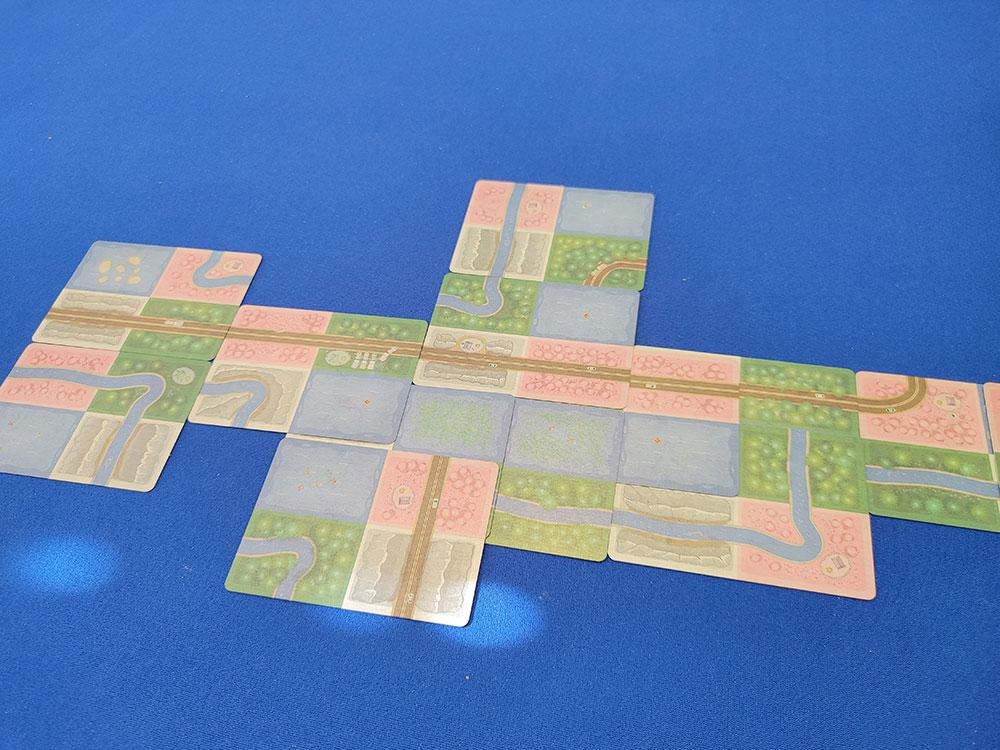 Our periodically benevolent publisher Tony Mastrangeli will often cater our assignments to the preferred gaming types of the staff. Need a dry solo-only Euro reviewed? Send it to Brand Bryson. Trick-taking games go to Andrew Smith or Jacob Daneman. And games with fun miniatures and lots of dice-rolling and luck-based events, well, Tony keeps those for himself.
Our periodically benevolent publisher Tony Mastrangeli will often cater our assignments to the preferred gaming types of the staff. Need a dry solo-only Euro reviewed? Send it to Brand Bryson. Trick-taking games go to Andrew Smith or Jacob Daneman. And games with fun miniatures and lots of dice-rolling and luck-based events, well, Tony keeps those for himself.
So when he announced that he had a special review bundle in mind for me, I was excited. I assumed the contents were carefully cultivated to my gaming tastes. When I opened the shipment, though, it contained three wallet-sized games with a note from Tony that read, “After you review these, you can use them to finally replace the Velcro Alf wallet you’ve been using since 1987.” So sometimes games are sent to us for other reasons.
Naturopolis is for 1-4 players and plays in about 15 minutes. It’s designed by Steven Aramini, Danny Devine, and Paul Kluka.
And I will never replace my Alf wallet, Tony. Never.
Gameplay Overview:
Naturopolis is a cooperative tile-placement micro game. The game consists of 18 cards, and at the start of the game, three of the cards will be put into play as both the scoring conditions for the game and the target score for victory. From that point on, players will take turns playing through the remaining cards and adding them to their map.

There aren’t many placement restrictions to speak of, except that roads on the cards cannot connect to rivers and all the cards must be placed horizontally. Other than that, any placement is legal, even if it may not make sense for scoring purposes; players can even cover regions of other cards they’ve played previously.
At the end of the game, players will score one point for each rectangle of their largest section for each separate region type, lose one point for each separate region type (don’t want to pave too much paradise, of course), and score the three target cards. If the team scores more points than the target total, they are victorious.

Game Experience:
As with all successful micro games, there’s a certain joy seeing what a designer can do with almost no components. Naturopolis is no exception. While many of the tile-placement mechanisms are familiar, the intricacies of the scoring cards and their target values provide a ton of replay value and interesting decisions.

Sometimes the scoring cards will force players to work on maximizing one card while simultaneously minimizing the damage of a different card. And yet, despite the variability in the scoring cards, the targets across all the game’s cards seem balanced and challenging without being impossible to achieve. It’s a neat design quirk that really stands out.
As a cooperative game, it’s a fun filler while setting up a bigger game, although on some level it becomes more of a social exercise. There is a somewhat odd rule quirk (which is present in many other cooperative games, to be fair) in which players can discuss the map itself but aren’t allowed to show each other their cards. I guess it’s meant so that teams don’t talk themselves into circles trying to game out the ideal placement for every card they have access to, but I often ignore this rule anyway. Regardless, Naturopolis is best as a solo puzzle for me.
Final Thoughts:
I found Naturopolis to be very engaging in all of my plays. It’s a fast-moving game and the rules are incredibly intuitive for modern gamers and newbies alike. It definitely isn’t breaking much new ground, especially considering that it’s very similar to other games by the same designers (Sprawlopolis and Agropolis to name a few), but the variable scoring cards and target-victory system are both inventive and allows the game to feel different each play.
Final Score: 3.5 Stars. As micro filler games go, Naturopolis succeeds thanks to its unique scoring system and quick playtime.
 Hits:
Hits:
• Unique victory conditions
• Easy to play
• Clear graphic design
• Lots of replay value
Misses:
• Might not be essential for those who already have Sprawlopolis and/or Agropolis.





















